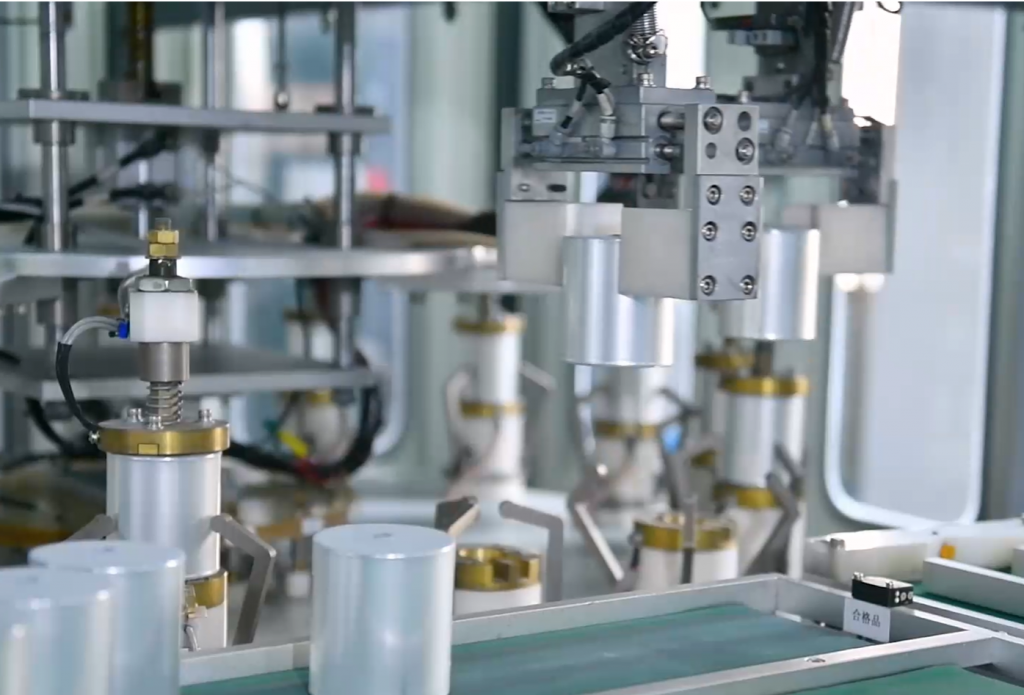Before plastic films were introduced, paper capacitors were commonly used in telecommunications starting in 1876; however, with the development of plastic materials during World War II, the capacitor industry began to replace paper with thinner polymer films.

The introduction of plastics in plastic film capacitors is getting thinner based on the requirement of industrial development. Meanwhile, understanding the detailed introduction of film capacitors is important, as the manufacture of film capacitors depends on the materials supply chain, and only a few large suppliers produce the plastic film materials used for film capacitors worldwide.
What Exactly Is A Film Capacitor?
Capacitors that utilize a thin plastic film as the dielectric are called film capacitors – the plastic film is created through an intricate film drawing method, which results in an ultra-thin layer. The film may be metalized or remain unaltered depending on the desired capacitor attributes.
Electrodes are subsequently incorporated, and the entire assembly is housed in a protective casing to guard against external elements. Note that film capacitors are popular in various applications due to their stability, affordability, and minimal inductance. As far as their types are concerned, these capacitors come in several varieties: polyester, metalized, PTFE (polytetrafluoroethylene), polystyrene, and polypropylene film capacitors. The primary distinction among these capacitors lies in the choice of dielectric material, which should be selected based on the intended application.
For instance, PTFE film capacitors are heat-resistant and commonly employed in aerospace and military technologies. On the other hand, metalized polyester film capacitors are utilized in situations that demand long-term stability at a reasonably low cost. In scenarios where price outweighs performance, more economical plastics are preferred.
Construction and Properties of Film Capacitors
One side of a film capacitor’s dielectric layer may or may not be metalized, depending on the design of the capacitor. The thickness of the film is less than 1 micrometer, making it an exceptionally thin film. After drawing the film to the proper thickness, the film is next sliced into ribbons, and the capacity of the capacitor that is being made determines the width of the ribbons used. A roll of film is created by winding together two separate ribbons of film to initiate a roll, which is then often flattened into an oval form so that it may be stored in a rectangular container.
This is significant because rectangular components take up less room on the printed circuit board, which is a limited resource. A connection is made between each of the two electrodes and one of the films in order to add the electrodes, which then will coordinate with the self-healing feature of film capacitors, undermining the original defect to maximize the performance of the whole electronic system. Consequently, the inside of the container is hermetically sealed by dipping it in plastic and sealing it with silicon oil, which assists in preventing the film roll from being damaged by moisture.
The capacitance of a typical film capacitor may range anywhere from less than 1-nF to 30-uF, and they are able to be manufactured in voltage ranges ranging from as low as 50V to as high as over 2,000V. Moreover, they are able to be produced for use in high-vibration automotive settings, situations with high temperatures, and applications requiring high power. Film capacitors have a long service life, excellent efficiency, and minimal losses compared to other types of capacitors.
Applications of Film Capacitors
Film capacitors are an important component in various technical applications, including but not limited to those related to new energy, electronic appliances, and transportation.
In new energy applications, film capacitors are often used in power electronics to improve the efficiency and reliability of renewable energy systems like wind turbines, solar inverters, and energy storage systems. These capacitors are particularly useful for applications requiring high voltage and current, as they can handle large amounts of power without overheating.
1. In electronic appliances, film capacitors are used in lighting, audio equipment, and power supplies.
2. In lighting applications, film capacitors are often used in ballasts to help regulate the flow of electricity to the lamp, ensuring that it operates at a consistent brightness.
3. In audio equipment, film capacitors boost audio output in filters and crossovers.
4. In power supplies, film capacitors help smooth out the output voltage and reduce noise.
In transportation applications, film capacitors are frequently found in electric automobiles and railroads. More specifically, these capacitors are often used in the motor drive system of electric cars, whilst in trains, these components are utilized inside the braking system.

Why Should You Choose DIN ELECTRONICS?
Are you considering choosing a reliable supplier of film capacitors? Well, let us tell you, DIN ELECTRONICS is a fantastic choice, which is a highly reputable company founded in 2001 that specializes in the production of capacitors, including plastic film capacitors.
Besides, we’ve got a wide range of products such as ceramic, tantalum, and aluminum electrolytic capacitors. Plus, we’re known for our exceptional quality, reliability, and innovation, as well as you can count on great customer service and a commitment to continuous improvement with DIN Electronics. Our global presence and adherence to strict international standards. In a nutshell, DIN ELECTRONICS capacitor is a solid choice!





